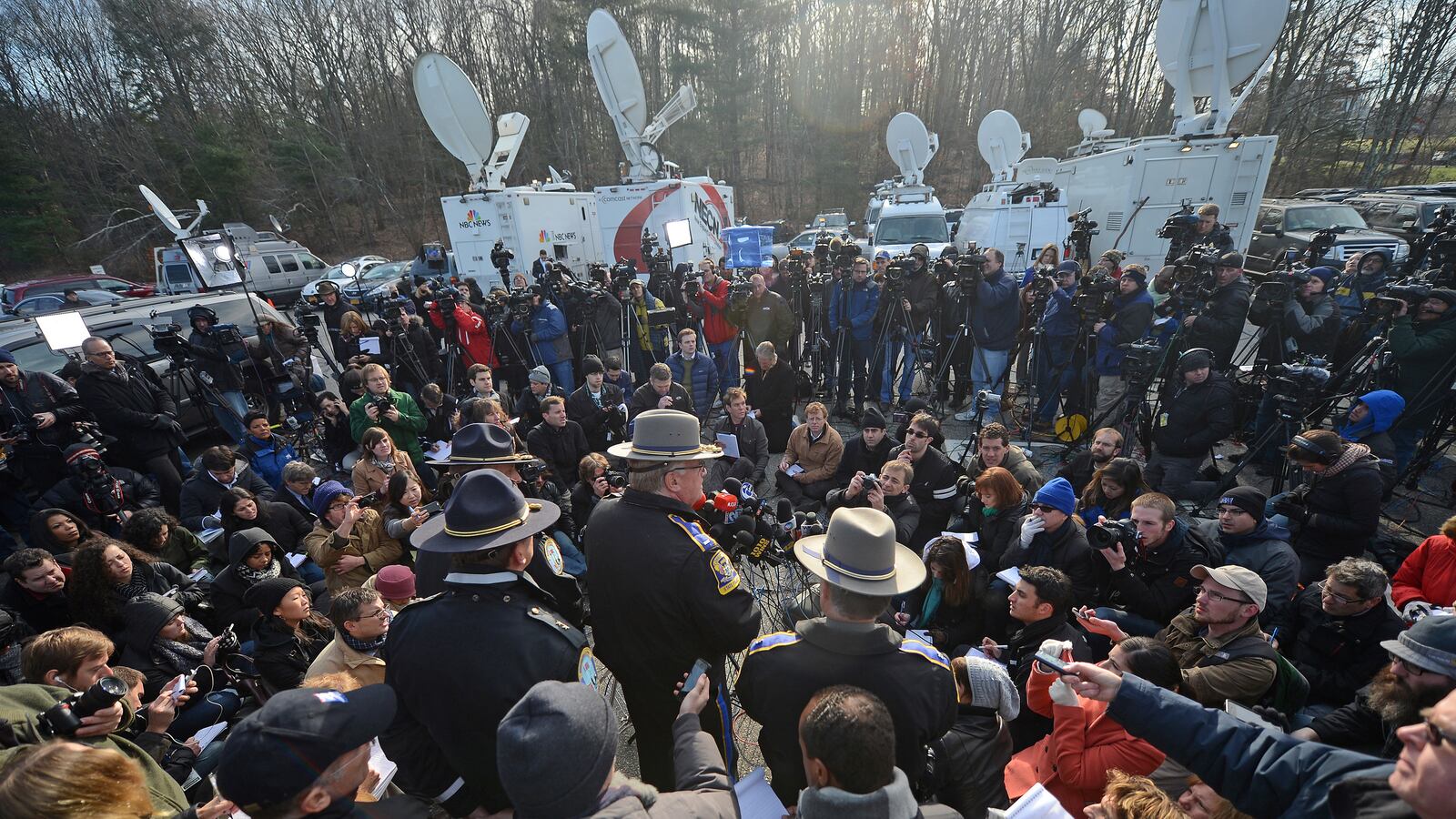Within a millisecond the shock shuttles through your body; grief consumes your soul. The words on everyone else’s mind race through yours: How could this happen? Why the senseless loss of innocent lives?

Seconds later, your mental Rolodex of sources spins in your mind. Who will give the best information? How long is the drive time to the scene? Where’s my laptop power cord?
And just like that, the wall goes up around your heart—which like every other sane human being’s is broken.
In watching the coverage of the horrifying Newtown school shooting, I was struck by how little emotion I heard in those reports. Anchors and reporters put on stoic faces to deliver the news that 20 children had been killed, even though inside they must have been torn apart, especially because many of them live in New York or Connecticut and were grappling with a tragedy in their own backyard.
No matter how awful the news, journalists are expected to keep a straight face. I cried when President Obama got a tear in his eye while addressing the country. He channeled the emotion of the country. That’s not how I felt watching the TV news teams.
On 9/11, when everyone else was running downstairs out of the USA Today building in Northern Virginia, I was running up the stairs with my crew to the 29th-floor studio to get video of the Pentagon, which is not far away. Having seen the planes hit the World Trade Center, I watched in horror seconds after a third plane hit the massive Defense Department building. I was scared because of news reports that another plane headed our way, and we were on the top floor of one of the skyline’s tallest buildings.
For the next 10 hours, I had to watch the smoke rise from the Pentagon, knowing that part of it was from charred bodies. You couldn’t escape the hermetically sealed building. But I had to hunker down and do my job, live shot after live shot.
That is the occupational calling of the journalist. When people are being killed, you can’t turn on the TV and process the enormity of the tragedy with loved ones. Your role is to help them process by reporting.
To survive, you put on a mask to do the job that you are paid to perform. You numb yourself as you hear the death count rise, and the screams of the mothers who will never hold their children again. You block out the image of your own beautiful, loving daughter lying in a pool of blood on her classroom floor alone and gone from your arms forever.
And you move. You get to the set, you get to the car. You pick up the phone to call your producer, your editor, your child-care provider.
You stuff down the guilt you feel for rushing to the scene to get information instead of helping those in their worst time of need.
Just like first responders—firemen, police, medics—professionalism trumps the lump in your throat. Adrenalin forces you to put one foot in front of the other. You painstakingly get the facts. Or get them wrong, as almost always happens to someone covering a live breaking-news event of this magnitude. You pray you are not the one who identifies the wrong suspect or victim—a cardinal sin that turns stomachs inside-out for spreading a lie.
As journalists we all know these feelings—and the need to contain our feelings. Instead, we stick microphones in the faces of grieving relatives and neighbors.
In my television reporting days, I was as dispassionate as the next news gal. I felt like I had something to prove. I had to do what I saw others doing on TV. But in the wake of what happened in Newtown, it’s now clear that too much restraint fails to match the moment when kids are being killed.





